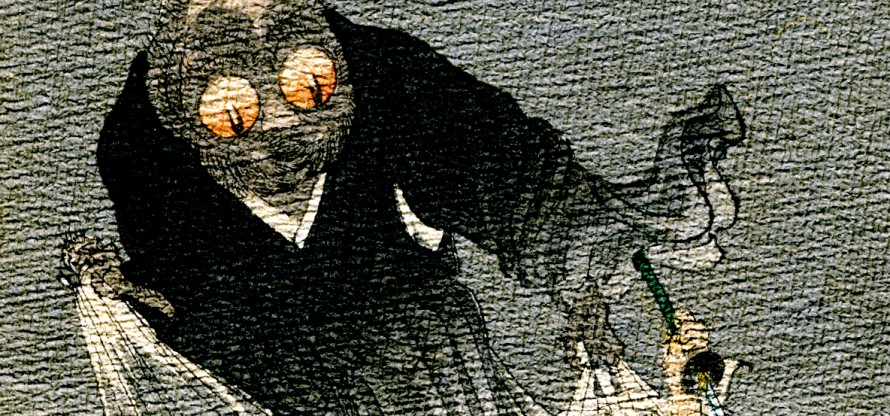Everyone loves a scary story, especially on Halloween. Noted writer and linguist Lafcadio Hearn’s 1910 English translation of the ancient Japanese ghost tale, The Goblin Spider, transports children of all ages to an exotic world of samurai warriors, haunted temples, and monstrous goblin spiders.
According to the tale, there used to be many goblin spiders in Japan. During the day, they looked just like common spiders—but late at night, they transformed into huge spiders with bulging eyes and menacing pincers. Capable of terrible things, these monstrous arachnids also had the magical power of taking human shape.

This volume is one in a series of folktales translated by Hearn and issued by Tokyo publisher Takejiro Hasegawa for the English-speaking market. Often called “crepe paper books” because of the texture of their pages, these popular books were hand-printed in vivid colors using wood blocks. Though promoted as “fairy tales,” there are no fairies in these stories. Instead, they belong to the ancient Japanese oral tradition of kaidan: yarns of the supernatural that often depict the horrific and the gruesome.

A storyteller of genius, with a gift for capturing the spirituality of Japanese legend and interpreting it to Western readers, Lafcadio Hearn, born in 1850 to a Greek mother and British father, was raised in Ireland by a great-aunt, and then sent to the United States at age 19. Making a name for himself as an itinerant journalist, he traveled to Japan in 1890 and immediately felt at home. He married a Japanese woman, became a naturalized citizen, and spent the rest of his life in his in his beloved adopted country. Upon his death in 1904, he was eulogized as the only foreigner who ever truly understood the Japanese soul. Today, his memory lives on at the Hearn Museum in his former hometown of Matsue.
Explore more from our Library’s Illustrated Children’s Book Collection.
Happy Halloween!
